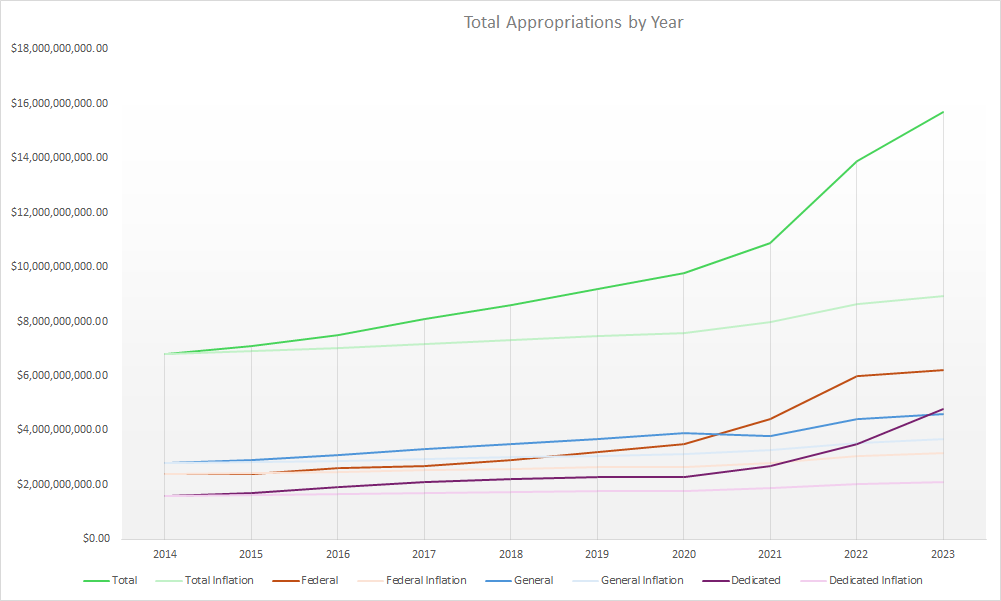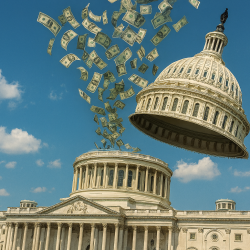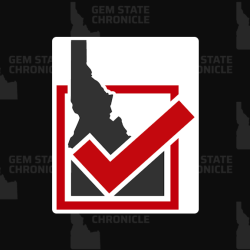Outside of a small number of hardcore libertarians and anarcho-capitalists, most people agree that we need some form of government in society. In America, state governments fill the role of ensuring public safety, providing essential services, and protecting individual rights. State governments also manage certain shared resources such as water. In 1890, the people of Idaho decided it was time to become a state, so they ratified a Constitution and joined the rest of the United States of America.
Our state’s founders saw a role for government in promoting social progress — this was the height of the Progressive Era, when people believed that technology and social sciences would solve all the ills that once plagued nations. To that end, our constitution mandates things like public schools, which were meant to promote learning, morality, and patriotism in the next generation.
Today, many conservatives believe our government has grown too much. Our state government funds dozens of agencies and departments, from basic functions like the Idaho State Police and the Lands Department to things like the Division of Occupational and Professional Licenses, the Lottery Commission, the Hispanic Affairs Commission, the Human Rights Commission, and Idaho Public TV.
My friends at the Idaho Freedom Foundation are bringing back their classic Pork Report on government waste this year. Make sure to sign up so you get a copy when it’s ready. In the meantime, I thought I might take a quick look at how our state government has grown over the past ten years.
Every government agency and program begins with good intentions, a desire to solve some problem in society or perceived imbalance in the free market. Once that agency or program is in place, however, it never goes away. Ronald Reagan said the nearest thing to eternal life on earth is a government program. Ada County Commissioner Tom Dayley once told me a story from his time in the Reagan Administration about a World War II era program that was still spending several million dollars each year. It took years to get it shut down.
Each agency and program comes to the Legislature each year asking for more money to hire additional employees, more money for salaries, funding for this or that endeavor, etc. The bureaucracy always expands of its own accord, because the people in each agency tend to want to expand their mission.
The budget is divided into three primary categories:
- Federal funds come from the federal government to fund programs such as Medicaid, free school lunches, and transportation projects. The Legislature still must appropriate the funds for them to be disbursed.
- Dedicated funds take revenue from specific sources such as gas taxes and licensing fees and apply them to specific purposes such as roads and conservation.
- General funds are everything else. They are mainly funded by income and sales taxes, and cover most of the state agencies linked above.
According to the Legislature’s budget dashboard, total appropriations in the year 2014 totaled $6.8 billion. Federal money made up 35.3% of that amount, while the general fund was 41.2%. If $6.8 billion had increased at the same rate as inflation, then the total budget would have been $8.95 billion in 2023, the most recent year with this data. However, total appropriations for 2023 were actually $15.7 billion. Rather than the 31.6% increase that would account for inflation, this is a 128.7% increase in the state budget.
I put together a graph showing total budget growth from 2014 to 2023, the growth of each of the three categories (federal, general, and dedicated funds), and what the growth would have been for each if it was merely adjusted for inflation:

A few things jump out at me. First, a lot of the budget increase over the past three years came from federal funds, many of which were related to the Covid-19 pandemic. The federal government opened the spigots in 2020 and 2021, but that doesn’t account for all of the spike.
Second, it looks as though dedicated funds surpassed the general fund in 2023. This could be for many reasons — perhaps the Legislature attached more stringent controls to appropriations over the past few years than it did before, moving money from one box to another. This might deserve its own article as I learn more about this phenomenon.
Note that these numbers are total appropriations. Each year, the Legislature passes a budget that contains original appropriations, which are then supplemented later in the year. Original appropriations for 2023 were $12.9 billion, but the total ended up being $15.7 billion – an increase of more than 20%. Original appropriations for 2024 are $13.9 billion, which means when all is said and done the total could top $16 billion.
That’s a lot of money, and it’s all coming from your pocket, one way or another. The state budget is funded by income and sales taxes, while the federal budget is funded by even more income taxes as well as the invisible tax of inflation. Idaho’s leaders boast that our state has a balanced budget, but 40% of that budget comes directly from the federal government and its $36 trillion national debt.
This has to change. When the session starts in January, you need to be calling your legislators and urging them to cut government spending. It’s not enough to simply reduce the rate of increase. There will be wailing and gnashing of teeth, of course. Every agency and program will present their wish list to JFAC, and any hint that their budget might be cut will cue dire warnings of catastrophe should the money spigot close. Our legislators must harden their hearts by remembering who really owns the money they’re playing with.
It’s time to go full Javier Milei, and say ¡afuera! to these agencies and programs that we really don’t need. The 2025 session will feature the most conservative Legislature in Idaho history. Let’s cut taxes, cut spending, and make our government lean again.
Gem State Chronicle is a reader-supported publication. To receive new posts and support my work, consider becoming a free or paid subscriber.
About Brian Almon
Brian Almon is the Editor of the Gem State Chronicle. He also serves as Chairman of the District 14 Republican Party and is a trustee of the Eagle Public Library Board. He lives with his wife and five children in Eagle.













